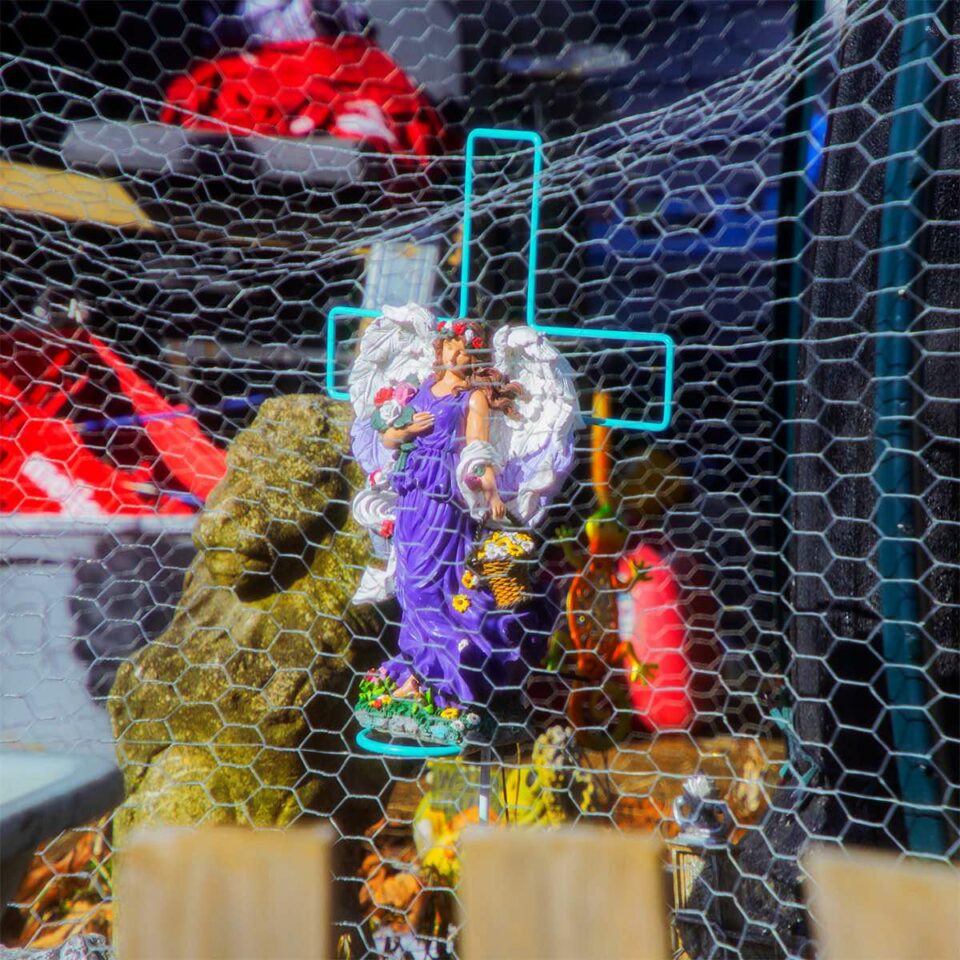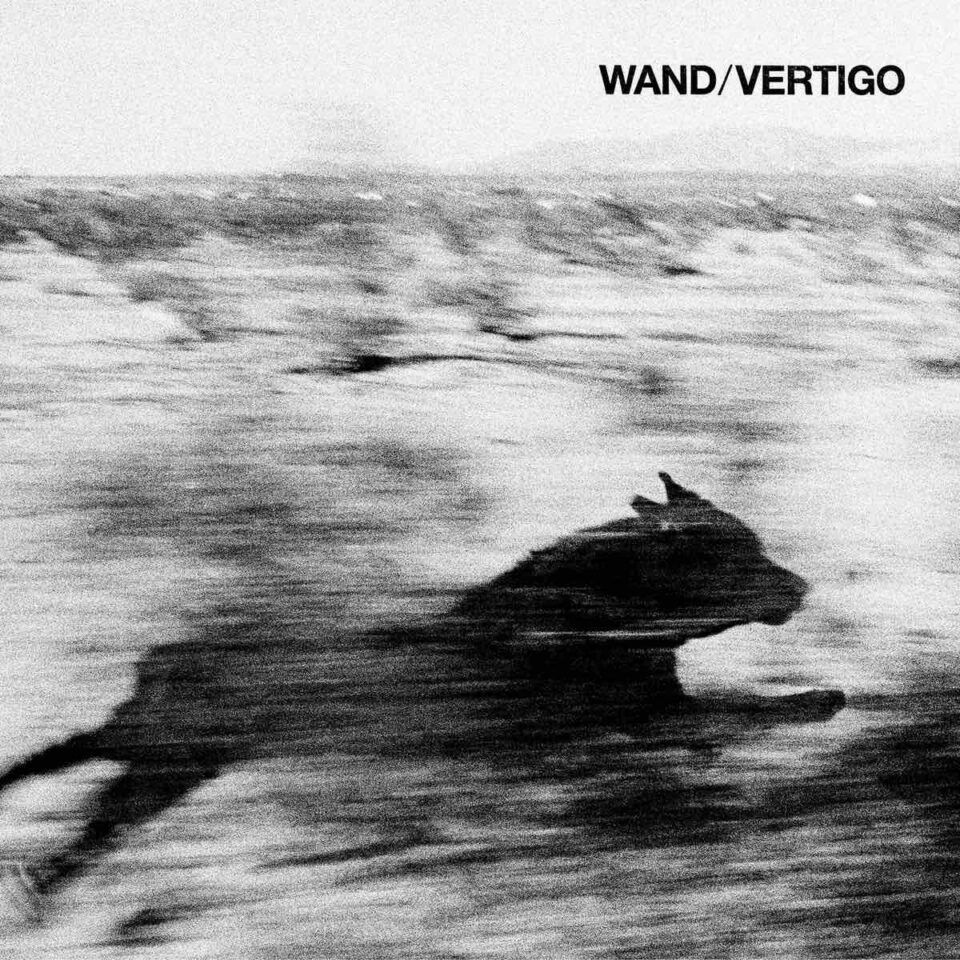Some shows take a few seasons to click, but it’s all there in the premiere of Nickelodeon’s Doug.
In the first episode, we meet Douglas Yancey Funnie, whose family—his mom, dad, and sister Judy—moves to the fictional town of Bluffington. The new kid in town, Doug gets pranked by local bully Roger Klotz; meets his crush, Patti Mayonnaise, and best friend, Skeeter Valentine; and in the end is bailed out by his wily dog, Porkchop. Everything that audiences would grow to love about the show—its uniquely rough art style, singular theme song, gentle tone, and unabashed sincerity—is there at the very start. Twenty-five years ago, Doug arrived fully formed.
In 1991, the cable channel Nickelodeon—then known mostly for screening licensed offbeat children’s programming and “oldies” during its “Nick at Nite” block—launched a line of original content dubbed “Nicktoons” with three shows: The Ren & Stimpy Show, Rugrats, and Doug. The latter stood out among the roster. It lacked the grotesque absurdity of Ren & Stimpy and the similarly madcap appeal of Rugrats. It was a quiet, often slow affair, marked by imaginary flights of fancy but rooted in gently unfolding storytelling. Its lead character was often anxious, tentative, and confused.
In contrast to the then-two-year-old Simpsons, with its breakout star Bart and his wonderfully crude catch phrases, Doug was remarkably genteel and put together—a “little gentleman,” says Billy West, the voice actor who portrayed him. Dressed in a sweater vest and khaki shorts, Doug didn’t have a bad bone in his body; he was stridently earnest, the antithesis of early ’90s slacker cool. Even today, the show remains among the most instructive cartoons Nickelodeon has ever aired: there’s a moral taught in each episode, always a lesson learned.
Though Doug was the awkward middle child to the other, more immediately popular Nicktoon kids and took its time finding its footing, it has since become a template for some of the most sincere animated programming on television.
A graduate of Christian college Lipscomb University in Nashville, Doug creator Jim Jinkins wasn’t sure his character was destined to be a cartoon—maybe he’d star in a book series. But when one of Jinkins’s friends who worked at Nickelodeon, Linda Schupack, heard the network was looking for original programming, she called him up and suggested he bring the character in to show to Executive Producer of Animation Vanessa Coffey.
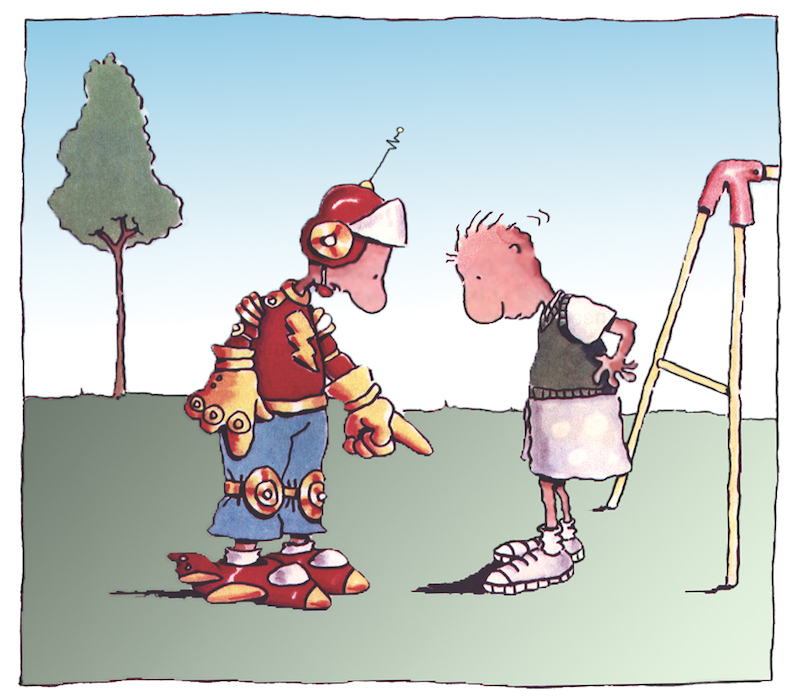 “[Linda called me] and said, ‘Get over there, show Doug to them,’” says Jinkins over the phone from his office at his current production company, Cartoon Pizza. “That’s one of those phone calls that changes your life—but in that moment, you don’t know it.”
“[Linda called me] and said, ‘Get over there, show Doug to them,’” says Jinkins over the phone from his office at his current production company, Cartoon Pizza. “That’s one of those phone calls that changes your life—but in that moment, you don’t know it.”
Jinkins traveled to Studio City, California, from his Jumbo Pictures production base in New York City to show off a rough treatment of the Doug character: a book called Doug Got a New Pair of Shoes. The meeting with Coffey was short; her reaction was immediate. “She ran out of the room to get permission, [then came back in and said,] ‘You’re going to go to pilot,’” says Jinkins.
Instead of focus group–tested concepts and “corporatized development,” Jinkins says it was Coffey’s intuition that provided Doug—along with the rest of the Nicktoons lineup—with its forward acceleration. The show began production immediately. “Vanessa Coffey had this notion of creator-driven, innovative stuff,” says Jinkins.
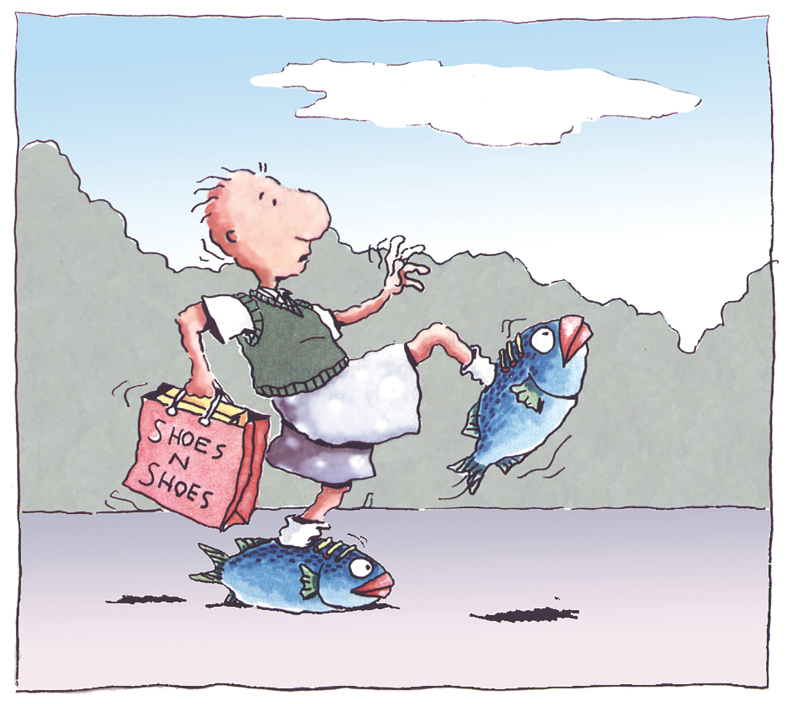 With his writers and production team at Jumbo, Jinkins began to flesh out the world of Bluffington. A small town with eccentric characters à la Mayberry or Springfield, the fictional burg was rooted in his own childhood home of Richmond, Virginia. All the hallmarks are there—goofy neighbors, strict teachers, a town pond, the mall, the Honker Burger.
With his writers and production team at Jumbo, Jinkins began to flesh out the world of Bluffington. A small town with eccentric characters à la Mayberry or Springfield, the fictional burg was rooted in his own childhood home of Richmond, Virginia. All the hallmarks are there—goofy neighbors, strict teachers, a town pond, the mall, the Honker Burger.
“We had a lot of freedom in those days,” says director Yvette Kaplan, who’d go on to co-direct episodes of Beavis and Butt-Head with Mike Judge as well as the movie Beavis and Butt-Head Do America. Notes from the studio, she explains, were scarce in the beginning.
“Nickelodeon would give notes like, ‘Throw in some more fun stuff with Porkchop the dog’ and we’d say, ‘Of course!’” she says. “The artists had a lot of freedom to play and have fun.”
“I definitely felt that we were working on something that was breaking new ground in children’s programming,” says storyboard artist Tony Eastman, who co-directed the pilot.
 From the beginning, Doug was mostly autobiographical; the lead was based on Jinkins himself. Skeeter was based on Jinkins’s pal Tommy Roberts, and Patti was a composite of Jinkins’s childhood crushes. Like Jim, Doug was a little awkward and extremely anxious. He was quick to slip into his imagination, either to adopt the guise of the superhero Quailman, the debonair spy Smash Adams, or the Indiana Jones–like Race Canyon—or to simply forecast every possible disastrous outcome of any decision he might make.
From the beginning, Doug was mostly autobiographical; the lead was based on Jinkins himself. Skeeter was based on Jinkins’s pal Tommy Roberts, and Patti was a composite of Jinkins’s childhood crushes. Like Jim, Doug was a little awkward and extremely anxious. He was quick to slip into his imagination, either to adopt the guise of the superhero Quailman, the debonair spy Smash Adams, or the Indiana Jones–like Race Canyon—or to simply forecast every possible disastrous outcome of any decision he might make.
“That is exactly who I was and who I am,” laughs Jinkins. “I will play out all scenarios… [Executive Producer] David Campbell would say, ‘Jim, you walk around a problem.’”
“I think Doug was his avatar,” West says of Jinkins.
“I definitely felt that we were working on something that was breaking new ground in children’s programming.” — Tony Eastman
But if Jinkins was the character’s head and heart, West was Doug’s soul. Known for his early work on The Howard Stern Show on WXRK and eventually for his roles on Futurama and Ren & Stimpy, West identified with Doug, adopting a “higher, kind-of genderless voice” meant to signify the eleven-and-a-half-year-old hadn’t quite hit puberty yet. “I was that kid, too,” says West. “I loved Doug.”
Initially, Doug struggled to realize its place. It didn’t land in the way Ren & Stimpy did. West, who voiced Stimpy, recalls that show’s immediate reaction among college kids in the East Village, who hosted viewing parties at local bar Telephone. Likewise, Rugrats was a critical hit, but West says reviewers didn’t know what to make of Doug at first. And that made Nickelodeon nervous, Jinkins says.
https://www.youtube.com/watch?v=WpX372qtphQ
“I was put in a co-production with [Ellipse Programmé] out of France for the second season and was basically told, ‘You’ll either do this co-production…or bye-bye,’” he explains. “It was not a love-fest like it is now.”
Like his ever-stressed hero, Jinkins struggled with the tension of running a show, but he found the actual creative process exhilarating.
“The way I remember it is: one day you were in slow-motion, tripping through a field of flowers, birds are landing on your shoulder singing. And the next day: we’re all gonna die!” says Jinkins. “People yelling at each other: ‘You’re an idiot! You don’t know what you’re doing!’ Not people inside our company—although that could happen—but with the parent company or co-production. I’d go home and see my lovely wife Lisa, who was so patient and supportive, and go, ‘I don’t know if we’re going to make it.’”
But Doug survived. Buoyed by a time slot change—from Sunday mornings to seven in the evening on weeknights—the show began to attract family audiences. People began confessing to Jinkins that they’d watch Doug over their dinner.
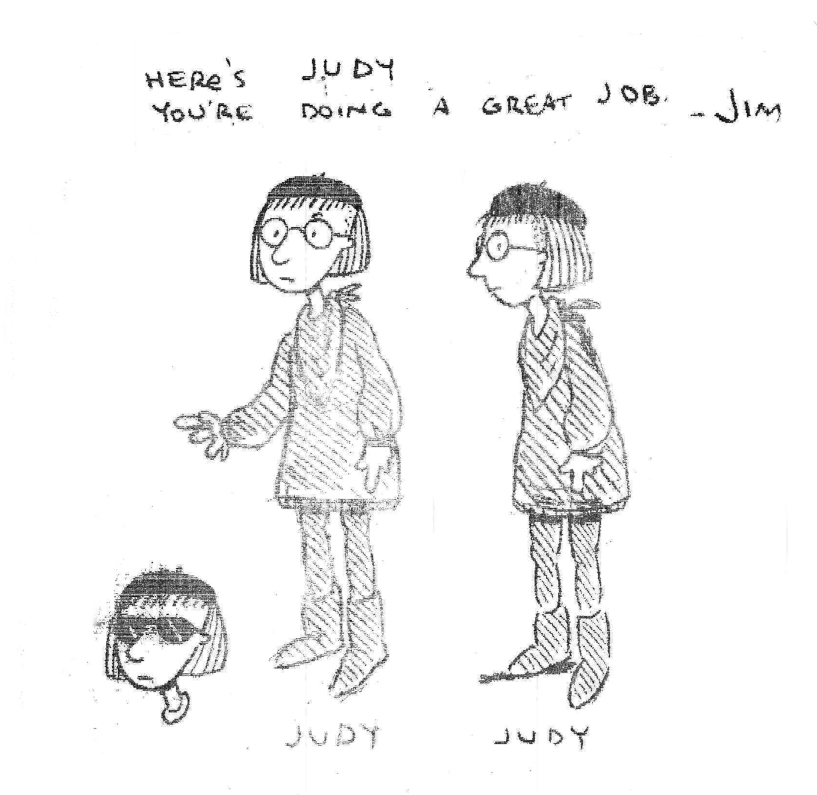 In its new time slot, the show’s warmth and good nature shined. At Jinkins’s insistence, Doug episodes always centered around an ethical dilemma: Doug finds a wallet and, despite being tempted to keep it, returns it to the owner, who doesn’t bother to show much appreciation (moral: do what’s right because it’s right); Doug struggles with a stylish pair of shoes that don’t fit (moral: function over fashion); Doug draws a rude doodle of his teacher and accidentally turns it over to her (moral: own your actions). The show was generous to its characters: even the “villain,” the Macklemore-Ramone-looking Roger, had his own moments of kindness, like when he helped throw Doug a surprise party—though that parity shouldn’t have been too surprising given that West voiced both characters.
In its new time slot, the show’s warmth and good nature shined. At Jinkins’s insistence, Doug episodes always centered around an ethical dilemma: Doug finds a wallet and, despite being tempted to keep it, returns it to the owner, who doesn’t bother to show much appreciation (moral: do what’s right because it’s right); Doug struggles with a stylish pair of shoes that don’t fit (moral: function over fashion); Doug draws a rude doodle of his teacher and accidentally turns it over to her (moral: own your actions). The show was generous to its characters: even the “villain,” the Macklemore-Ramone-looking Roger, had his own moments of kindness, like when he helped throw Doug a surprise party—though that parity shouldn’t have been too surprising given that West voiced both characters.
“To me it was a breath of fresh air looking at Doug—it really had humanity, good spirit, and ethos,” lifelong animator and Doug director Ken Kimmelman says. “With so many other cartoons, you can get laughs from contempt, but this had a lot of respect in it. It was kind of uphill, not downhill.”
“I of course wanted [the show] to be funny and well structured, but more than anything I wanted it to matter,” Jinkins says. “I wanted it to make a statement about how, at least from my perspective, we ought to treat each other and ought to live.”
 By 1996, Doug had become a “known quantity,” says Jinkins. And while it had established a modicum of popularity, Nickelodeon declined to renew the show’s fifth season. “It was too sweet, too nice, too tender,” Kaplan says. “Ren & Stimpy was the big hit. They wanted to do things that were edgier.”
By 1996, Doug had become a “known quantity,” says Jinkins. And while it had established a modicum of popularity, Nickelodeon declined to renew the show’s fifth season. “It was too sweet, too nice, too tender,” Kaplan says. “Ren & Stimpy was the big hit. They wanted to do things that were edgier.”
Jinkins began negotiations to bring the show to Disney, where it would serve as the cornerstone for ABC’s newly launched “One Saturday Morning” block. The transition wasn’t without casualties: many of Doug’s original writers and directors departed, as did West, who left over financial disputes and was replaced by Tom McHugh.
On ABC, the show lasted three more seasons. After the conclusion of the seventh and final season, Doug and the crew made the jump to the big screen with 1999’s Doug’s 1st Movie. Despite the bigger spotlight, Jinkins acknowledges that fans tend to find the Disney iteration of Doug lesser, and while he doesn’t entirely disagree with the sentiment, he says the changes to Doug came from him, not from higher-ups at Disney.
“We’d already done a hundred and fifty some-odd stories, so our writing team was looking for a way to restart,” says Jinkins. “The changes were my doing. I wanted to shake it up.”
Following the conclusion of the show, it seemed Doug might live on as a film property, but critics didn’t take well to the big screen debut, and Doug’s 2nd Movie wasn’t to be. Disney closed down Jumbo, and Jinkins and producer David Campbell founded Cartoon Pizza, which has produced JoJo’s Circus and shorts for Sesame Street.
As Doug came to an end at the dawn of the 2000s, the show’s innocent tone seemed to have fallen out of favor. Big animated hits like SpongeBob SquarePants and Dexter’s Laboratory had emerged, picking up more from Ren & Stimpy’s farcical style.
But as Doug continued in reruns, its influence grew. Kaplan says that while working as a supervising producer on Cartoon Network’s Clarence in 2014, she was blown away to note Doug’s influence on the young animators.
“I was working with a very young creator and a very young crew,” Kaplan says. “I’ll never forget walking around the [studio] and noticing the kids would be working [while] watching or listening to something [on YouTube]. I couldn’t believe my eyes—almost every one of them was watching Doug.”
 A quarter of a century on, Doug’s influence can be felt in shows like Adventure Time, Steven Universe, Over the Garden Wall, and Bob’s Burgers—programs full of genuine, weird, and, above all, kind characters. And while Jinkins wouldn’t rule out the possibility of returning to the world of Bluffington one day, he’s content to know that his show has impacted so many kids and creators in its embrace of vulnerability and open-heartedness.
A quarter of a century on, Doug’s influence can be felt in shows like Adventure Time, Steven Universe, Over the Garden Wall, and Bob’s Burgers—programs full of genuine, weird, and, above all, kind characters. And while Jinkins wouldn’t rule out the possibility of returning to the world of Bluffington one day, he’s content to know that his show has impacted so many kids and creators in its embrace of vulnerability and open-heartedness.
“People come up and tell me, ‘Thank you for making a show that taught me how to treat people,’” says Jinkins.
And according to West, you never know quite how the average Doug fan is going to look, act, or appeal.
“I was at a convention and this big biker came up [to me] with the whole complement of leather jacket, boots, the works,” says West. “He’s got this big handlebar mustache, and he comes over and he goes, [adopts gruff voice] ‘Brother, Doug was my whole childhood.’ He just seemed like he was a little boy again.” FL
This article appears in FLOOD 5. You can download or purchase the magazine here.






